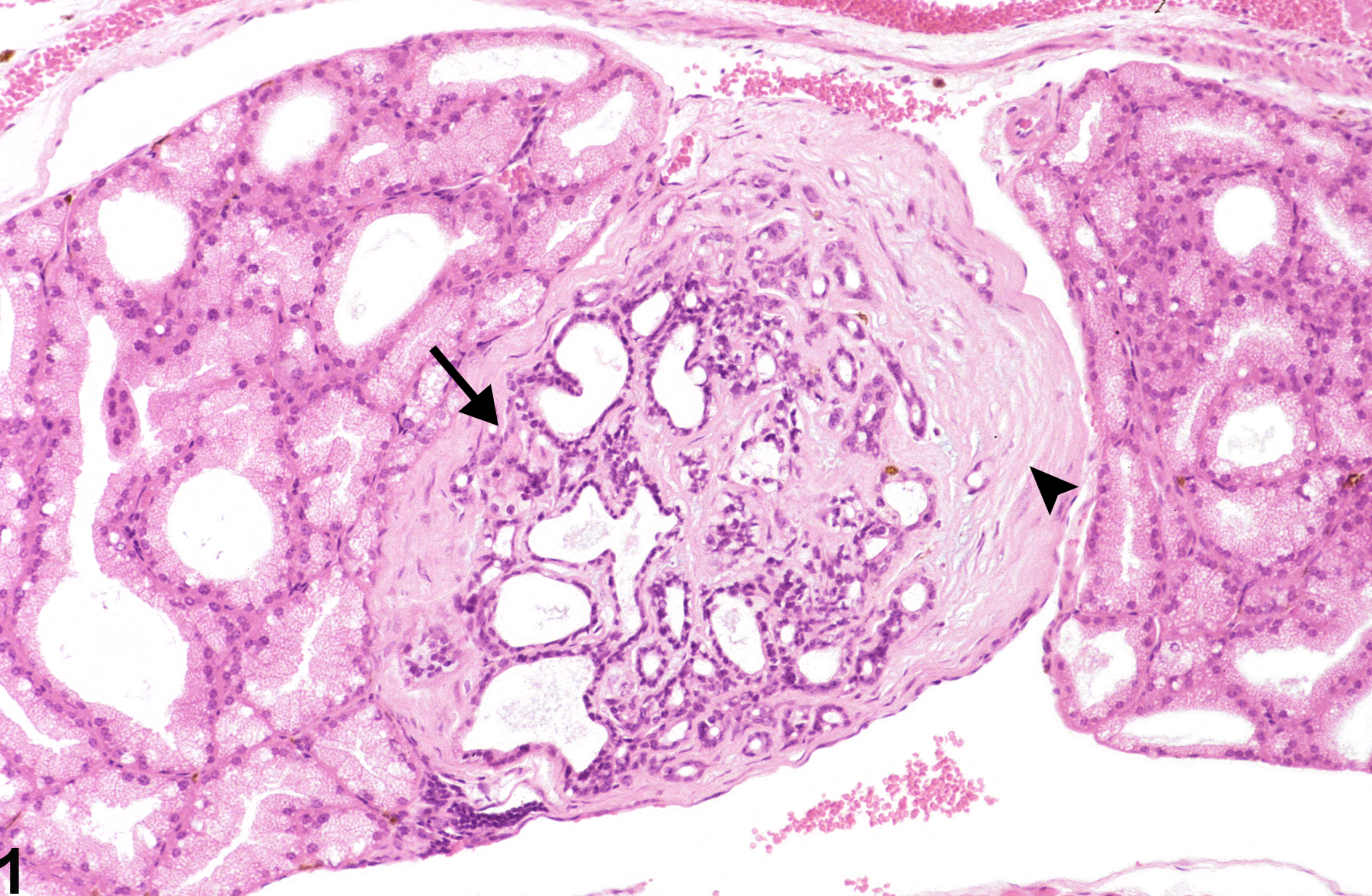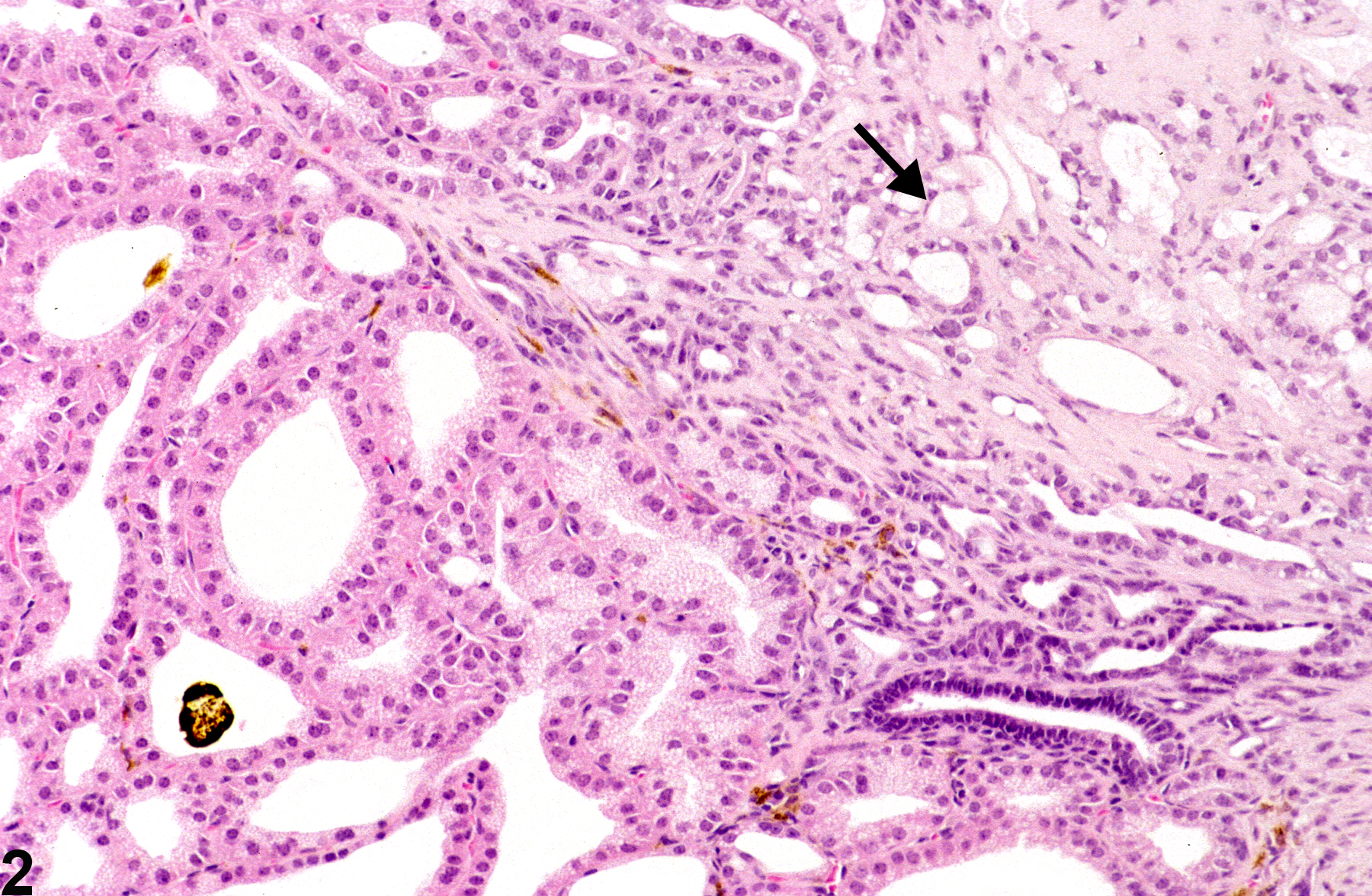Special Senses System
Harderian Gland - Atrophy
Narrative
Botts S, Jokinen M, Gaillard ET, Elwell MR, Mann PC. 1999. Salivary, Harderian, and lacrimal glands. In: Pathology of the Mouse: Reference and Atlas (Maronpot RR, Boorman GA, Gaul BW, eds). Cache River Press, Vienna, IL, 49-79.
Krinke GJ. 1991. Atrophy and sclerosis. Harderian gland, rat. In: Eye and Ear (Jones TC, Mohr U, Hunt RD, eds). ILSI Monographs on the Pathology of Laboratory Animals. International Life Sciences Institute Press, Washington, DC, 137-140.
Krinke GJ, Schaetti PR, Krinke A. 1996. Nonneoplastic and neoplastic changes in the Harderian and lacrimal glands. In: Pathobiology of the Aging Mouse, Vol 2 (Mohr U, Dungworth DL, Capen CC, Carlton WW, Sundberg JP, Ward JM, eds). International Life Sciences Institute Press, Washington, DC, 139-152.
Lambert RA, Yudkin AM. 1923. Changes in the paraocular glands accompanying the ocular lesions which result from a deficiency of vitamine A. J Exp Med 38:25-32.
Abstract: https://www.ncbi.nlm.nih.gov/pubmed/19868768National Toxicology Program. 1983. NTP TR-244. Toxicology and Carcinogenesis Studies of a Polybrominated Biphenyl Mixture (Firemaster FF-1) in F344/N Rats and B6C3F1 Mice (Gavage Studies). NTP, Research Triangle Park, NC.
Abstract: https://ntp.niehs.nih.gov/go/7095National Toxicology Program. 1997. NTP TR-461. Toxicology and Carcinogenesis Studies of Nitromethane (CAS No. 75-52-5) in F344/N Rats and B6C3F1 Mice (Inhalation Studies). NTP, Research Triangle Park, NC.
Full Text: https://ntp.niehs.nih.gov/ntp/htdocs/lt_rpts/tr461.pdfPercy DH, Wojcinski ZW, Schunk MK. 1989. Sequential changes in the Harderian and exorbital lacrimal glands in Wistar rats infected with sialodacryoadenitis virus. Vet Pathol 26:238–245.
Full Text: http://vet.sagepub.com/content/26/3/238.full.pdfPuk O, Esposito I, Söker T, Löster J, Budde B, Nürnberg P, Michel-Soewarto D, Fuchs H, Wolf E, Hrabé de Angelis M, Graw J. 2009. A new Fgf10 mutation in the mouse leads to atrophy of the Harderian gland and slit-eye phenotype in heterozygotes: A novel model for dry-eye disease? Invest Ophthalmol Vis Sci 50:4311–4318.
Full Text: https://doi.org/10.1167/iovs.09-3451Van Herck H, Baumans V, Van Der Craats NR, Hesp APM, Meijer GW, Van Tintelen G, Walvoorts HC, Beynen AC. 1992. Histological changes in the orbital region of rats after orbital puncture. Lab Anim 26:53-58.
Abstract: http://lan.sagepub.com/content/26/1/53.shortYoshitomi K, Boorman GA. 1990. Eye and associated glands. In: Pathology of the Fischer Rat: Reference and Atlas (Boorman GA, Eustis SL, Elwell MR, Montgomery CA, MacKenzie WF, eds). Academic Press, San Diego, CA, 239-260.
Abstract: https://www.ncbi.nlm.nih.gov/nlmcatalog/9002563
Harderian gland - Atrophy in a female B6C3F1 mouse from a chronic study. The alveoli are shrunken, tortuous and lined by variably flattened epithelial cells (arrow), and there is concurrent interstitial fibrosis (arrowhead).



